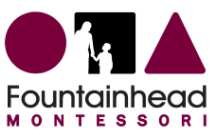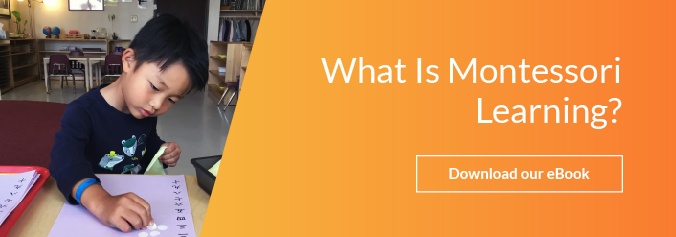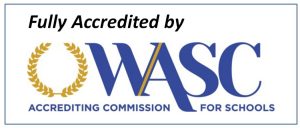Each student needs to learn the basics in school. No matter what type of program you choose for your child, there are some baseline expectations about what he or she will learn. In both public and private school programs, students learn basic academic skills like how to read and count. As children grow, the concepts become more complex, and their academic abilities increase. However, the benefits of school do not have to end with learning a list of concepts and facts. Students can walk away from their educational experience with a number of valuable life lessons as well. In the Montessori classroom, value is placed on teaching both the academic concepts and life lessons. The Montessori philosophy integrates the two types of learning so completely that they work hand-in-hand with one another in the classroom.
Learning can happen in a wide variety of situations
In Montessori programs, learning is not relegated to a desk in a classroom. Learning often happens on the move as students work in different stations throughout the Montessori classroom. Learning happens individually and in mixed-age groups in Montessori school. Students learn through their interactions with other students, teachers, and the environment around them. Enrichment programs provided in many Montessori schools also offer students the chance to learn in unique environments. For example, at Fountainhead Montessori School, students have access to an enrichment program that lets them learn about concepts like botany and zoology in an environment outside of the classroom. Learning in Montessori programs can happen in a wide variety of situations. This teaches students that learning can happen anywhere if they are open to it, which is a lesson that can help your child develop into a life-long learner.
Each person is ultimately responsible for his or her own learning
In the Montessori classroom, students are expected to be active participants in what and how they learn. The teacher creates an individualized learning plan and provides each child with choices within that plan. This design helps students to feel like they have a voice and a responsibility when it comes to their education. The life lesson that comes from this design is one of personal responsibility. Learning personal responsibility in the classroom will help your child develop that important sense in other areas of life.
Learning is a lifelong pursuit
The overarching goal of Montessori education is to prepare students for success in life. This long-term view of education impacts what is taught in the classroom as well as how the information is presented. Students are shown how the things they are learning now will be valuable in the future – in the real world. For example, students in the Montessori classroom learn about tasks of daily living. From the beginning, students take the skills they learn in the classroom and apply them at home. Creating this connection between the classroom and the real world helps students discover that learning is a lifelong pursuit that does not have to be confined to a certain age or place.
The life lessons your student will learn in the Montessori classroom will help them succeed academically and in life beyond formal education. In order to truly understand what the Montessori classroom can offer your child, it is important to schedule a time for classroom observation through which you can get a firsthand view of the life lessons that are woven throughout the daily activities in the Montessori Classroom.












Let us know what you think about this post
Put your Comment Below: